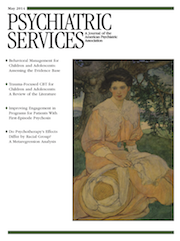Devastating Losses: How Parents Cope With the Death of a Child to Suicide or Drugs
In their compelling book, Devastating Losses, the team of Feigelman, Jordan, McIntosh, and Feigelman tackle an often taboo subject: the death of a child by suicide or drugs. Although much has been written about the impact of the death of a child on the parents, a child’s death from suicide or drug overdose is often viewed through a different lens.
Both Jordan and McIntosh are distinguished researchers in the field of suicidology and survivor guilt. William and Beverly Feigelman, in addition to their substantial academic and clinical experience, bring a more personal perspective to this study of loss, for they are also the parents of a son who committed suicide.
When the authors are writing as researchers, they focus on study design, methodological concerns, and outcome measures. Feigelman and his colleagues try to quantify the power that familial, community, and personal stigmatization and other issues can have on parents when a child dies by suicide, examining such social stigma in terms of the time it takes for some measure of personal healing to occur and the extent of grieving difficulties and subsequent mental health problems that parents experience.
Acknowledging the pain of all postsuicidal death, the authors diligently attempt to answer the big questions of what eases grieving and what impedes its slow but gradual progress. They look at issues such as the response of family and friends, the circumstances surrounding the death, the strength of the parental relationship, and the co-occurrence of other loss experiences.
These somewhat dry (for the nonresearcher) reports of study findings, however, are interspersed with first-person accounts of parents who have lived through loss as a result of suicide. With a wrenching poignancy, parents talk about their dread as holiday time approaches, triggering more acute feelings of loss. Some parents talk with a small amount of relief when they describe going through the loss with a sympathetic partner. For some couples, sharing the tragic loss brings them to a new and stronger place in their relationship. For clinicians reading this book, the personal stories might suggest ways to better assist grieving parents.
The book concludes with a practical look at activities that promote healing and growth after the traumatic loss of a child to suicide. The authors explore the prevalence with which survivors turn to support groups in order to feel “human” again. Being surrounded by others who have lived through the same experience seems to support growth and healthy acceptance far more than does meeting with a mental health or counseling professional or even a member of the clergy. The authors conclude with a discussion of online support groups and their growing acceptance and usefulness.
Paradoxically, the strength of Devastating Losses is also its primary weakness. The book serves three agendas—as a reference guide to much of the research that has been done on the subject of loss via suicide, as a personal statement of how families deal with and recount their experiences of loss, and as a guide to services that might be useful to the newly bereaved. In that sense there is something for everyone. However, some readers may find that the varying agendas do not complement one another but rather compete for the real power of this challenging book and its important topic.



